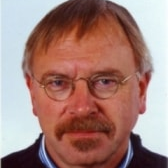Perspectives of Atomic Physics with Trapped Highly Charged Ions
A special issue of Atoms (ISSN 2218-2004).
Deadline for manuscript submissions: closed (30 November 2016) | Viewed by 48431
Special Issue Editor
2. Physics Division, Lawrence Livermore National Laboratory, Livermore, CA 94550, USA
Interests: experimental atomic physics; atomic physics with heavy-ion accelerators, storage rings and ion traps; spectroscopy and atomic lifetime measurements;laboratory astrophysics
Special Issue Information
Dear Colleagues,
The spectra of highly charged ions (HCI) have fascinated scientists since Edlén and Tyrén's pioneering work in the 1930s. The recognition in the 1940s that the hitherto mysterious solar coronal lines seen during solar eclipses originated from highly charged ions of Ca and Fe revolutionized the view of the sun and its workings and founded a new understanding of astrophysics. Since the 1950s, fusion plasma experiments reached higher and higher temperatures which were indicated by the production of higher and higher ion charge states. Fast ion beams were excited by being passed through thin foils; since the 1960s this technique enabled the time-resolved observations of beam-foil spectroscopy. Eventually the charge state distributions produced in the ion–foil interaction reached up to a few-electron ions of uranium, facilitating the study the high-field effects of quantum electrodynamics. However, especially at high ion beam velocities, the control of the Doppler effect poses problems to achieving high accuracy. On the other hand, heavy-ion storage rings have since enabled a plethora of very interesting physics experiments. Laser-produced plasmas were added to the spectroscopic toolbox in the 1970s; however, these hot plasmas are of high electron density and thus are more of technological interest than suited for accurate spectroscopy. Ion trapping of low charge state ions began in earnest in the 1950s, but it thrived and included highly charged ions only when vacuum technology progressed sufficiently, and when superconducting magnets supported Penning traps, and eventually the electron beam ion trap. Since the 1980s, all charge states of all elements have become available in such traps, with negligible Doppler shifts and little Doppler broadening in the spectroscopic observation. The low particle density in electron beam ion traps furthermore mimics the conditions in various astrophysical plasmas, and this wide field on its own should be extremely fruitful. Consequently, the electron beam ion trap concept and development which began at Livermore (CA, USA) by now, with ion traps of all sizes, has spread to quite a number of countries on (so far) four continents. Yet another tool has been provided by the recent combination of X-ray lasers and ion traps. Nuclear physics employs charge breeding in electron beam ion traps; extremely accurate mass measurements have been performed on trapped HCI, and fascinating processes observed on single ions in heavy-ion storage rings. There is a lot of physics to be explored!
It should be useful and advantageous for the community to have a concentrated depository that reflects the width and variety of research in the subfield of Atomic Physics with Trapped Highly Charged Ions. For this purpose, the call for contributions to a Special Issue is renewed. Of course, "Atoms" welcomes submissions on all aspects of atomic physics, which usually report on past achievements. For this Special Issue of Atoms, I would like to particularly encourage and invite manuscripts that serve a different purpose in the community by looking ahead. I would like to see an emphasis on the assessment of a field (with suitable examples from your own work), combined with ideas of how work in the field might or should move forward. "Where are we, where do we want to go, using or developing which tools?" In any case, each paper needs original and noteworthy content.
Prof. Dr. Elmar Träbert
Guest Editor
Manuscript Submission Information
Manuscripts should be submitted online at www.mdpi.com by registering and logging in to this website. Once you are registered, click here to go to the submission form. Manuscripts can be submitted until the deadline. All submissions that pass pre-check are peer-reviewed. Accepted papers will be published continuously in the journal (as soon as accepted) and will be listed together on the special issue website. Research articles, review articles as well as short communications are invited. For planned papers, a title and short abstract (about 250 words) can be sent to the Editorial Office for assessment.
Submitted manuscripts should not have been published previously, nor be under consideration for publication elsewhere (except conference proceedings papers). All manuscripts are thoroughly refereed through a single-blind peer-review process. A guide for authors and other relevant information for submission of manuscripts is available on the Instructions for Authors page. Atoms is an international peer-reviewed open access monthly journal published by MDPI.
Please visit the Instructions for Authors page before submitting a manuscript. The Article Processing Charge (APC) for publication in this open access journal is 1500 CHF (Swiss Francs). Submitted papers should be well formatted and use good English. Authors may use MDPI's English editing service prior to publication or during author revisions.
Benefits of Publishing in a Special Issue
- Ease of navigation: Grouping papers by topic helps scholars navigate broad scope journals more efficiently.
- Greater discoverability: Special Issues support the reach and impact of scientific research. Articles in Special Issues are more discoverable and cited more frequently.
- Expansion of research network: Special Issues facilitate connections among authors, fostering scientific collaborations.
- External promotion: Articles in Special Issues are often promoted through the journal's social media, increasing their visibility.
- Reprint: MDPI Books provides the opportunity to republish successful Special Issues in book format, both online and in print.
Further information on MDPI's Special Issue policies can be found here.





